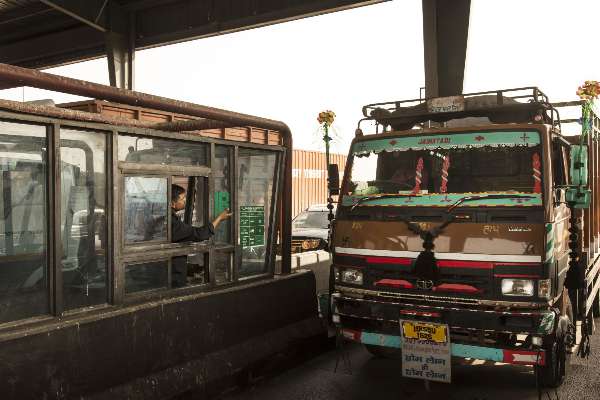Starting April 1, inter-state movement of goods worth Rs 50,000 will need generation of e-way bills, Bihar Deputy Chief Minister Sushil Modi said at a media briefing on Saturday. The briefing followed a meeting of the Group of Ministers held to monitor the launch of e-way bill system and decide on a new return filing framework for the Goods and Services Tax.
Generation of e-way bills for movement of goods within a state will be adopted in a phased manner, starting with 4-5 states initially, said Modi who heads the GoM tasked with overseeing the GST information technology framework. This proposal on intra-state e-way bills will be tabled in the GST Council’s meeting on March 10 for final approval.
After the portal that was to generate e-way bills crashed on February 1- the earlier date for implementation – the generation of such invoices was deferred. The date to begin a phased roll out of intra-state e-way bills will be notified later, Modi said. He added that about 9.5 lakh taxpayers have registered on the e-way bill portal, and around 6.5 lakh e-way bills are being generated daily as part of the trial runs.
The recommendation of a phased launch of intra-state e-way bills will enable businesses to become ready over a period of time, said MS Mani, senior director at Deloitte India in an emailed statement. This will give time to the GST Network to overcome glitches that arise during the initial phase, he added.
‘No Decision on GST Return Simplification Yet’
In its meeting today the GoM was also expected to decide on a new, simpler-to-comply-with GST returns filing framework but discussions remained inconclusive. The committee could not decide on whether provisional input tax credit should be given to taxpayers, or credit should be given once the tax is paid by them, Modi said.
A committee headed by Ajay Bhushan Pandey, chairman of the GSTN, had made recommendations to the GoM.
An official involved in the deliberations but who preferred to remain unnamed described two proposals made by the committee. In one the seller uploads all invoices and the buyer acknowledges the invoices. Based on this, the buyer would get credit for tax paid. A notification window would be available for the buyer to alert the seller if invoices have not been uploaded. Until the seller uploads invoices no input tax credit would be available. This model was proposed by Infosys Chairman Nandan Nilekani who has been advising the government on simplification of return filing.
The other proposal is to provide provisional credit to the buyer in case an invoice has not been uploaded by the seller. However, if the seller disputes that transaction, the credit given to the buyer would be reversed, explained the official quoted above.
In both proposed models the onus of uploading invoices will be on the seller and the buyer will have to simply acknowledge them.
“We can put various suggestions (on the return filing procedure) before the GST Council,” Modi said. Till the time a new framework for GST return filing comes up, filing of GSTR-3B returns will continue, he added.
The fact that the GoM requires more deliberations on the issue of simplifying returns indicates that there is an attempt to retain fundamental features such as invoice matching and input tax credit tracking, while making the return process easier for taxpayers. MS Mani, Tax Partner, Deloitte India
The next GST Council meeting will be held in March.








